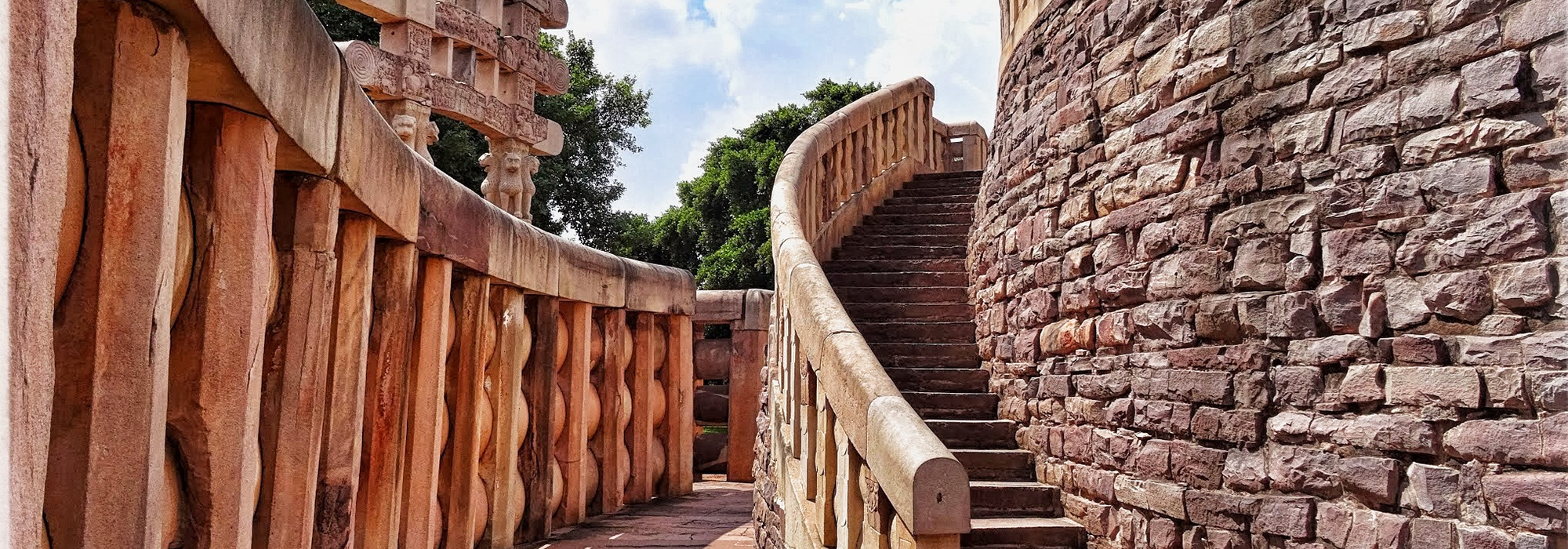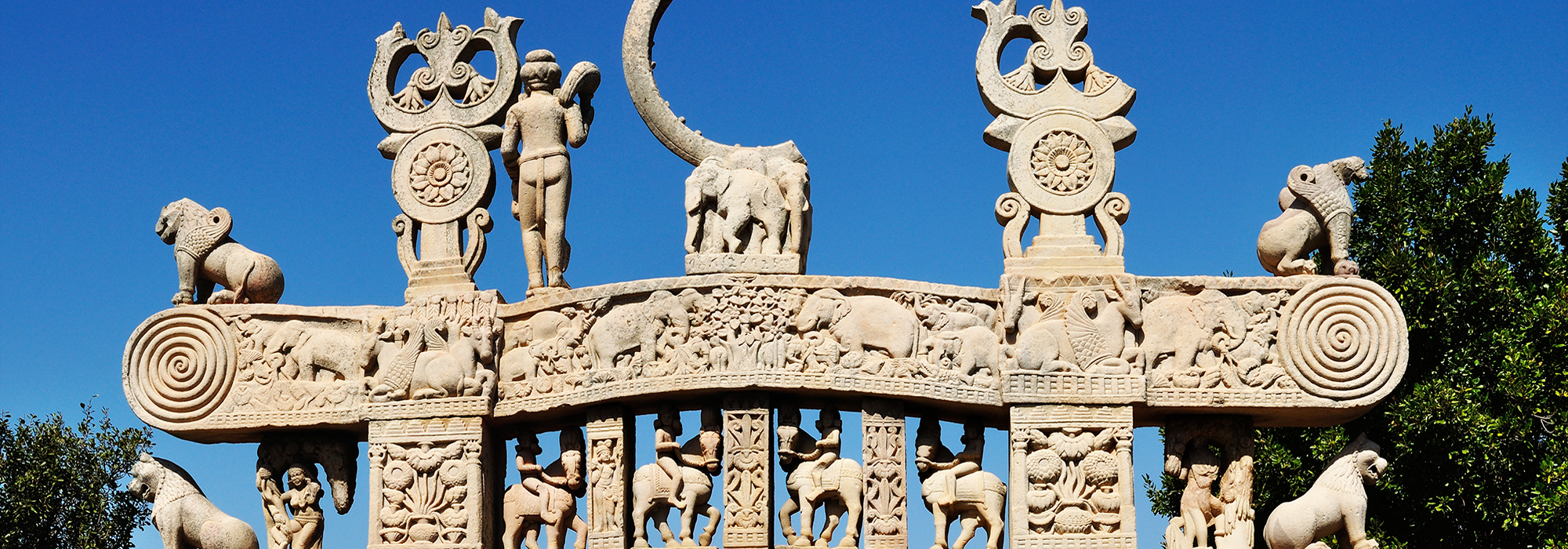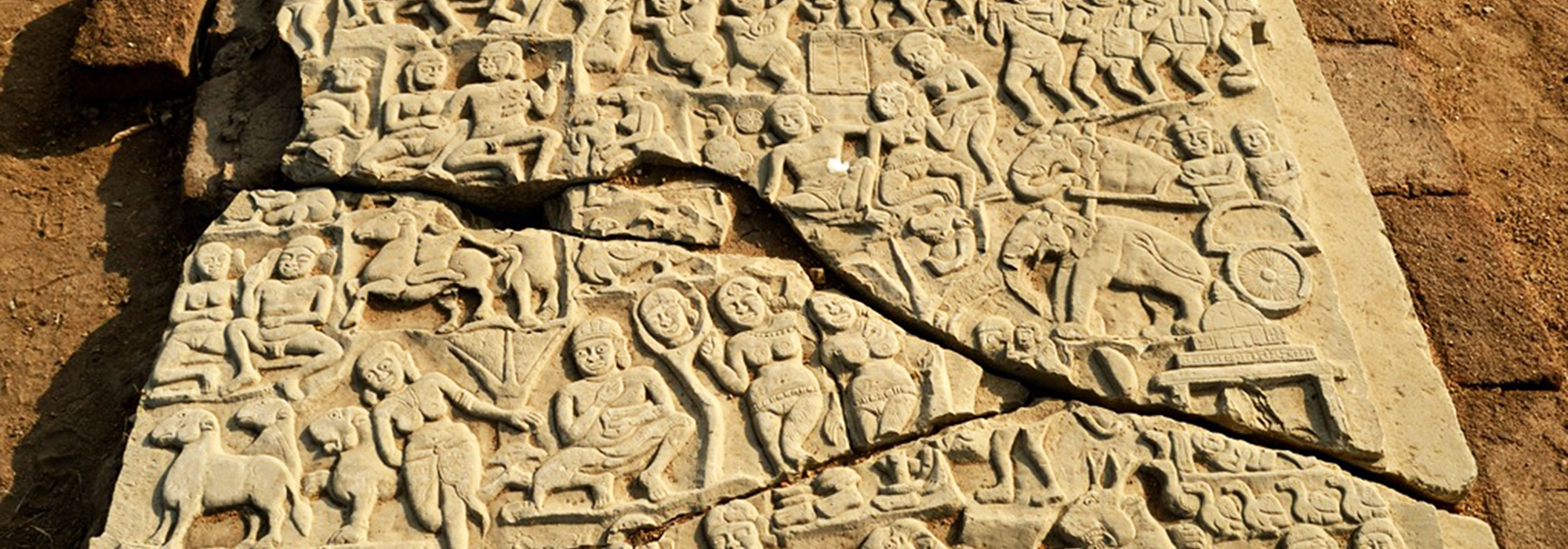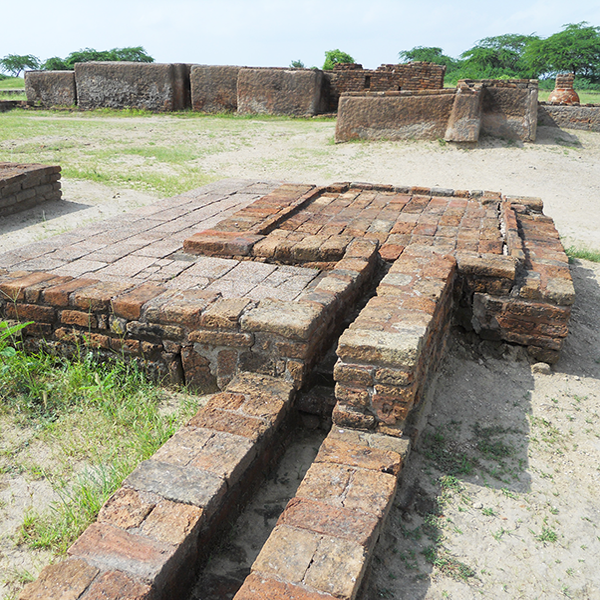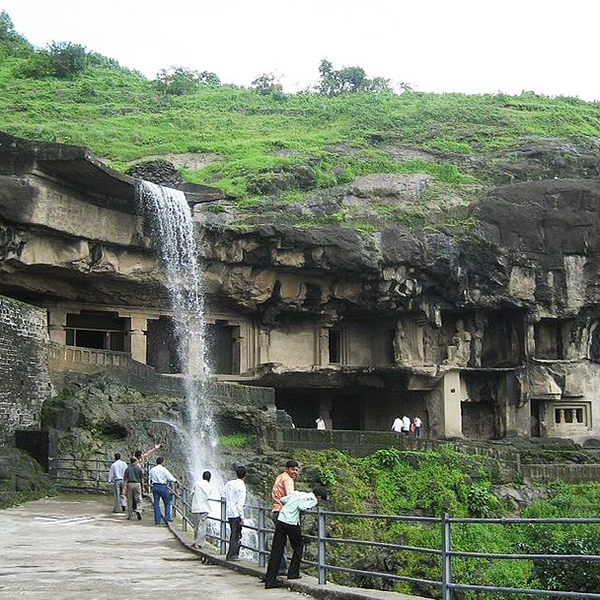Sanchi is a famous Buddhist site which is located in the Indian state of Madhya Pradesh. It is easily accessible by flights, trains, and roads. Although Sanchi is not associated in any way to the life of Buddha and neither did the master ever set his foot here, yet the place is full of Buddhist structures of great architectural and sculptural beauty. The place saw a continuous building activity starting from the 2nd century B.C. up till the 12th century A.D. The monuments include Stupas, pillars, monasteries, temples, and paths for circumambulation with railings. The four gateways of Sanchi stupa are world famous for their intricate sculpture, while the inscriptions found on the monuments throw light on the life of the people. The onsite museum at Sanchi, maintained by the Archaeological Survey of India, houses the art pieces found at the site which includes the lion capital of Askoka's pillar.

